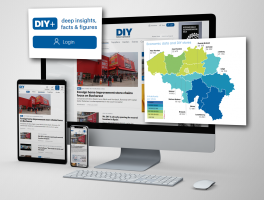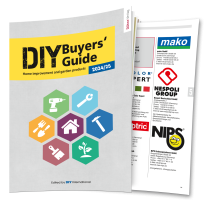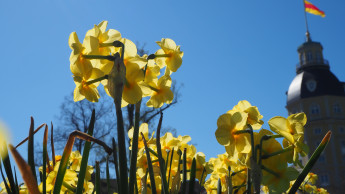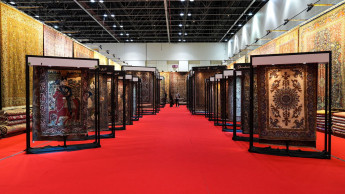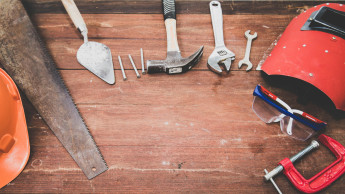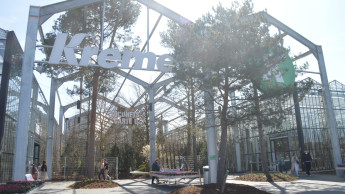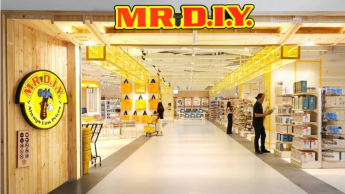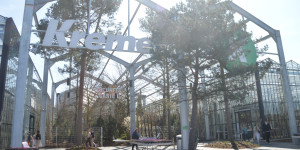Hagebau minus Quester
Market leader Baumax is at present limiting expansion in Austria to extending its current 70 outlets, or building a new store in the immediate vicinity of a small existing outlet, which is then closed. In the last two years Baumax has suffered declining sales, which have been more than compensated for by the positive results coming from the countries of central Europe. Obi has managed to attract new members over these two years, especially from Öbau with a total of ten additional DIY stores, which means it remains in second place in the league tables by both floorspace and sales. Although Hagebau once again lost the big builders’ merchant, Quester, as a member at the end of 2003, this DIY retailer held on to its third place by the addition of eleven new partners with 25 DIY stores from Öbau. Since 1 January 2004 Hagebau has more than 56 DIY stores with a weighted retail area of approx. 159 000 m². Öbau exists now only as a “brand name” for the new members of Hagebau.
Bauhaus is continuing on its expansionary course in Austria. Over the last two years it has opened only large-format stores, whilst at the same time closing down small Bauhaus outlets. Consequently the total number of 22 has remained unchanged, though the overall floorspace has risen considerably to 148 400 m². The mainly smaller DIY stores (over 400 m² in size) belonging to the German Baywa group did not experience much change over the past two years; overall retail area rose slightly and the 2002 drop in sales was evened out again in 2003. The high total of 134 DIY outlets with an overall retail area of 138 850 m² puts the group in fifth place ahead of Hornbach, which achieves an almost equally high retail area of 130 120 m² with just eleven large-format DIY stores and has clearly overtaken the AFS/RWA in terms of turnover. Hornbach is continuing with its expansionary programme.
Since January 2004 Quester is once again out on its own as Austria’s biggest builders’ merchant with 22 specialist retail stores, which account for around 25 per cent of the group’s overall sales. Hellweg is planning extensions to its seven relatively small DIY stores.
Breakdown by province
The DIY stores of these ten DIY companies have been broken down according to their presence in the nine provinces. Recent publications in no way correspond to the reality of the regional distribution of the DIY stores and their sales in Austria, since their authors have always included building materials sales and location figures for Hagebau and RWA in their calculations. This regional breakdown has taken into account only AFS/ RWA’s 44 DIY stores that are over 1 000 m² in size, since no information is available about the locations and retail areas of the 90 small RWA stores (400 to 1 000 m²). The result is a reduction of the number of DIY stores from 369 to 279, and of the combined retail area from 1 217.5 m² to 1 163.4 m² (status: end 2003).
When the distribution of the population between the provinces determined by the most recent census in 2001 is compared with their proportion of sales and space density (inhabitants per m² of retail area), considerable differences are revealed. These include a clear east-west divide, provided the federal capital of Vienna is left out of the equation.
Apparent in Lower Austria, Styria and Carinthia are above-average DIY sales and a very high space density. Upper Austria, Salzburg, Tyrol and Vorarlberg have a low space density and at times a sales share that is far below average compared with their share of the population.
Low space density in Vienna
There are a number of reasons for the low store density in the federal capital. For years the high real estate prices in particular have played a prohibitive role here. Large-format DIY stores can practically only be built on the very fringes of the outer suburbs. In addition to this, the new census has shown that the Austrian population is increasingly migrating away from Vienna, whereas there has been considerably increased immigration of non-residents into the old inner-city areas. These are not promising circumstances for DIY superstores, although smaller DIY outlets, which have for years occupied inner-city locations, are quite satisfied and tend either to have expanded already or to want to expand.
The interrelation between Vienna and Lower Austria must also be taken into consideration. Six of Lower Austria’s large-format DIY stores alone, with a retail area of approx. 65 000 m² between them, are located directly on the fringes of the outer Viennese suburbs, which are areas with a high proportion of detached houses set in their own gardens. And it can be presumed that these DIY stores get around 50 per cent of their customers from Vienna. The many Viennese families who have moved from the city centre now have their principal or secondary residence in the extended Viennese metropolitan area with its considerably increased DIY store presence and are presumably regular DIY store customers in these districts, whereas their city apartments tend to be neglected (or let to foreigners and students). Nevertheless, the geographically large province of Lower Austria is very active, and this is where the house-builders, developers, renovators and amateur gardeners live. This province is the domain of Baumax with about 35 per cent of the floorspace, but the other DIY retailers are also well represented here.
Conspicuous east-west divide
Styria is also known for its high level of interest in furnishings, homes and gardens. Though it must be said that residents in many areas are short of buying power. Here Obi, Baumax and Hagebau are especially well represented. Over recent years several large-format DIY stores have been opened in the Graz and Mur-Mürztal areas (Baumax, Bauhaus and Hornbach). Carinthia has for years had a high density of DIY stores, with the emphasis on Baumax, Obi-Imo, AFS and Öbau. It is a tourist area with a summer season (lakes) and a winter season. Tourism helps house-owners to finance their newly built homes. Carinthia is another province with a low level of purchasing power.
Although Upper Austria has more inhabitants than Styria, the relatively poor DIY store coverage has even been slightly reduced. All the DIY groups are represented by individual outlets, but Baumax has nearly 50 per cent of the overall retail area. Five large-format Bauhaus, Baumax and Hornbach DIY stores are the cause of the relatively high average retail area in this province.
Western Austria begins in the state of Salzburg with its alpine character, which also leaves its special mark on the people of these regions. One gets the impression in Salzburg, with its high spending power, that people there in general have a negative attitude towards DIY stores and to doing-it-yourself altogether. The number of DIY stores here has gone down to the low total of twelve over the past two years, and the only Mega-Baumax has been reduced to less than half its original space. Tyrol is approximately comparable with Carinthia by population, but has far fewer DIY stores. Hagebau, Obi and Baumax dominate the scene here, alongside relatively small neighbourhood DIY suppliers. However, extensions are under construction in the provincial capital of Innsbruck.
Vorarlberg has added a considerable amount of DIY retail area over recent years, so that its space density is now similar to Vienna’s. Several DIY retailers are represented here by individual outlets. The DIY store density in the small province of Burgenland on the Hungarian border more or less corresponds to its proportion of the population. This is the domain of the Obi members, with six medium-sized DIY stores.
The 90 little RWA DIY outlets with their average floorspace of approx. 600 m² are spread more or less in conformity with the population distribution through eight of the provinces (excluding Vienna). However, the gain in retail area overall amounts to just 54 000 m², which is no great increase for the provinces individually. The gross sales of E 1.995 bn generated by the DIY stores signify between 45 and 48 per cent of the overall market volume of specifically DIY or garden centre ranges sold in Austria; more than 50 per cent is sold through other marketing channels. The significance of these other marketing channels, however, varies greatly from one provincee to the next.

 Menü
Menü





